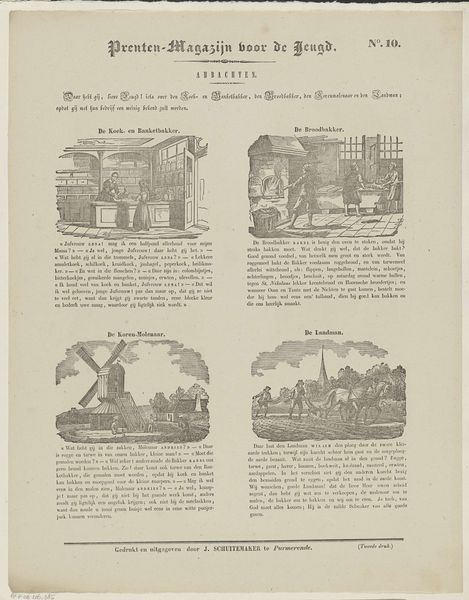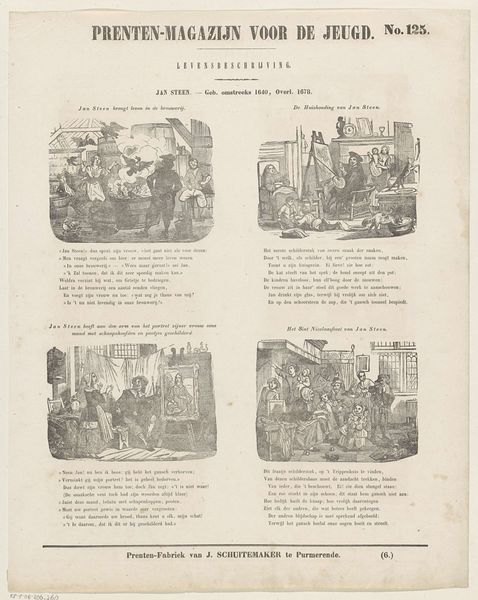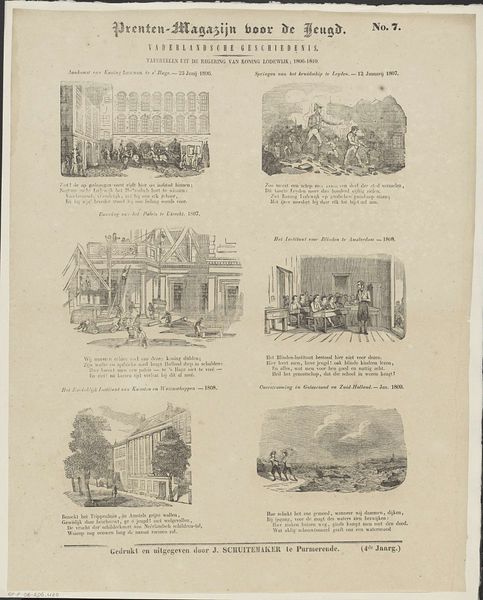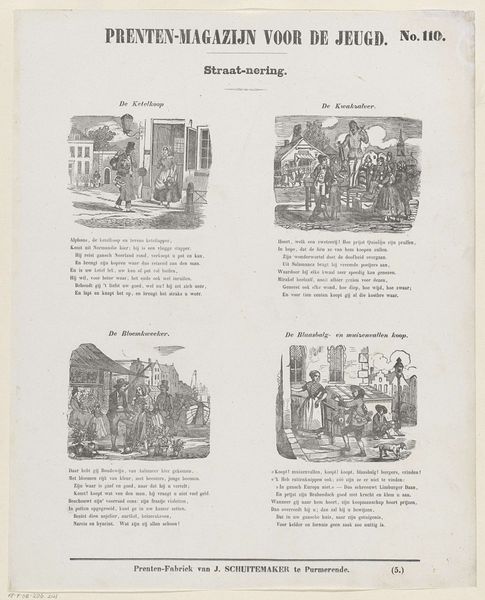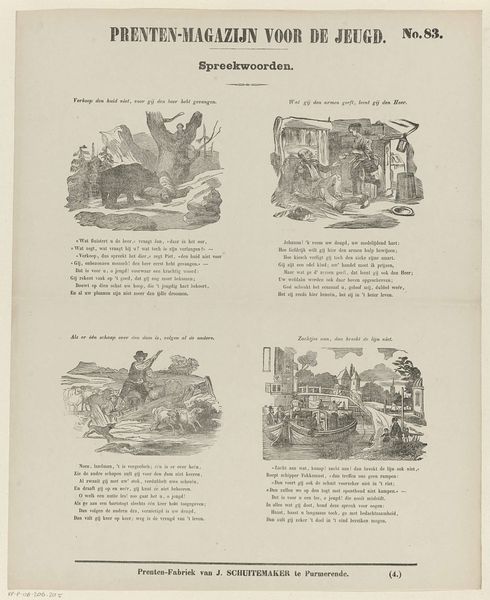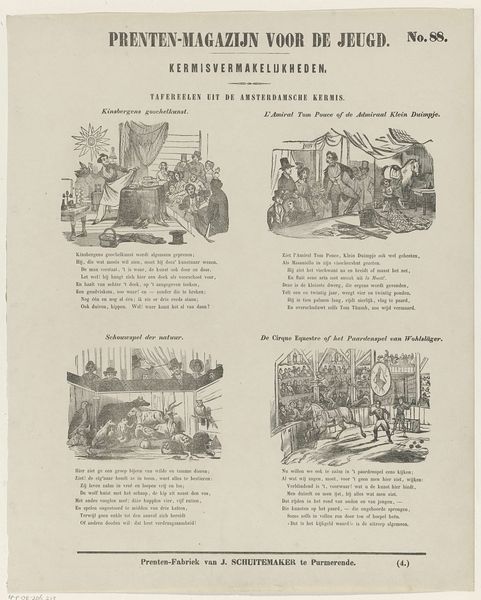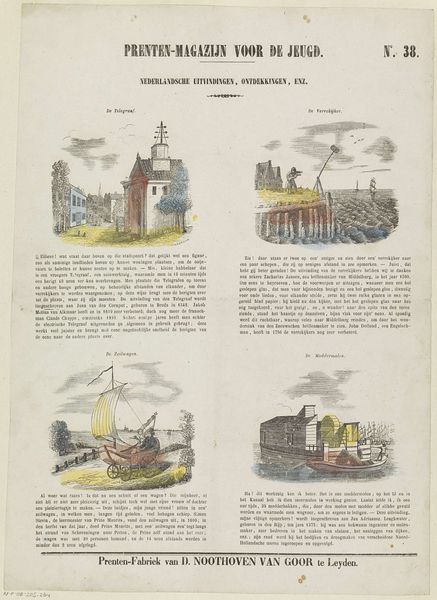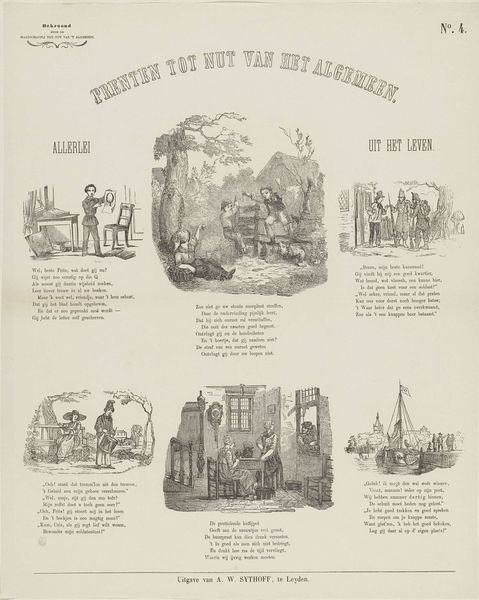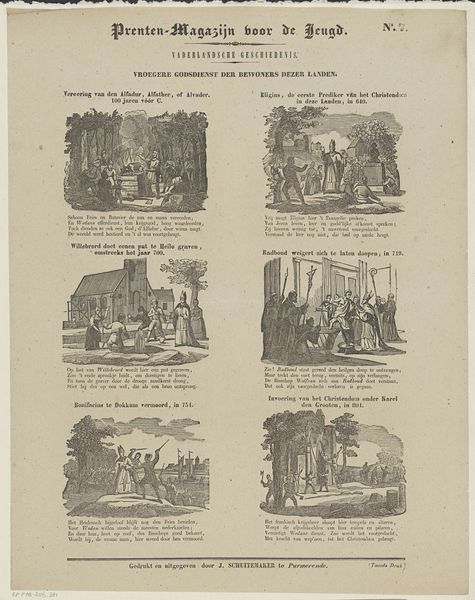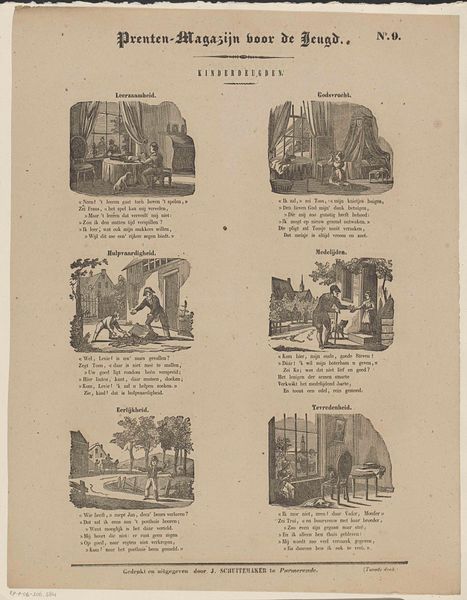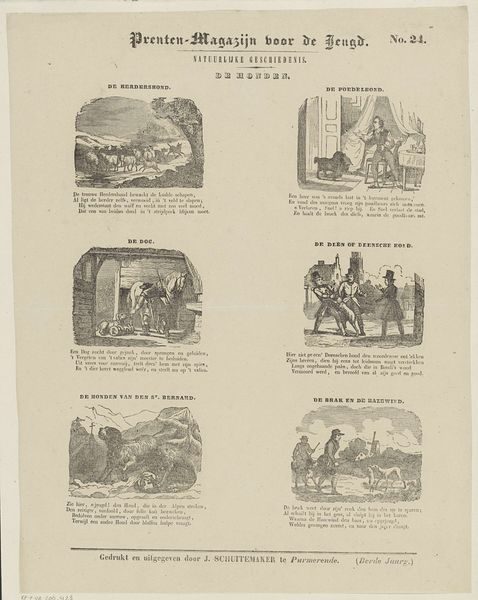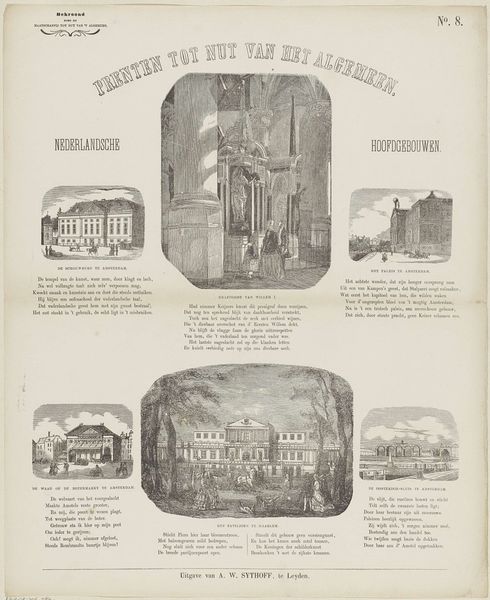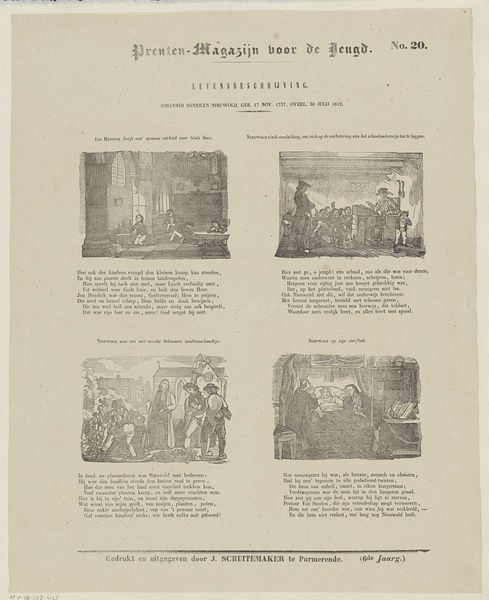
graphic-art, print, engraving
#
graphic-art
#
narrative-art
# print
#
history-painting
#
engraving
Dimensions: height 427 mm, width 338 mm
Copyright: Rijks Museum: Open Domain
Editor: So, this is *John Williams op Samoa* by George Baxter, created sometime between 1869 and 1882. It's a print, an engraving... When I look at it, I immediately feel transported to another time, a more colonial era. There's almost a scrapbook feel to the composition, a series of snapshots rather than one cohesive scene. What do you make of it? Curator: Oh, absolutely, it *is* a journey, isn't it? Baxter’s printwork often captures that sense of wide-eyed wonder mixed with, shall we say, a specific cultural agenda. It’s like gazing into someone’s treasured memory box, albeit one curated with a very particular narrative in mind. I see these almost as stages – the grand church rising, the quiet domesticity of Williams translating scripture... There's an exoticism at play, carefully balanced with the civilising influence they represent. Do you notice the recurring visual motif? The subtle, insistent claim to territory – both physical and spiritual. It reminds me, a little sadly, of pressed flowers – beauty captured, but also fundamentally changed. Editor: That makes sense. It feels very intentional, how these images were put together to tell a very particular story. The "civilizing influence," that’s a complicated idea, right? How do you think Baxter’s work contributed to that narrative at the time? Curator: That's the crux of it, isn’t it? Baxter’s art became a vital tool – visually popularising missionary endeavors. It offered a readily digestible, romanticised view of colonial projects, conveniently sidelining the complexities and inherent power dynamics. Imagine these prints being shared in parlours back in England - tales of adventure seamlessly blending with affirmations of national purpose. Editor: So it's propaganda, almost? Beautifully rendered propaganda, I suppose. It makes me look at it with new eyes – it isn't just a historical artifact, but evidence of how stories get crafted and spread. Curator: Precisely! Art as a mirror reflects not just the world but the ideologies that shape it. It’s why looking closely – even at pretty pictures like these – becomes so incredibly crucial, no? A good reminder to look beyond the surface.
Comments
No comments
Be the first to comment and join the conversation on the ultimate creative platform.
